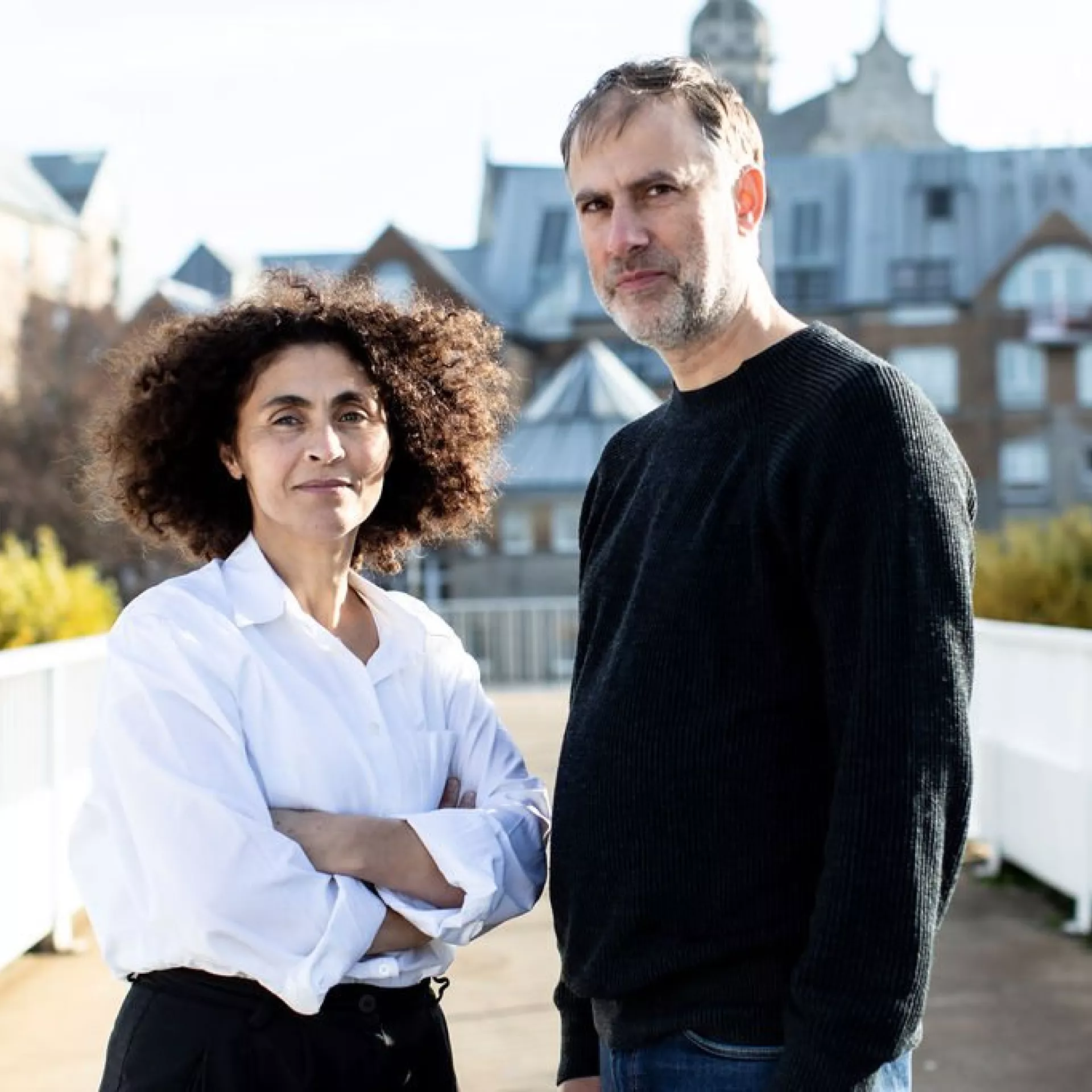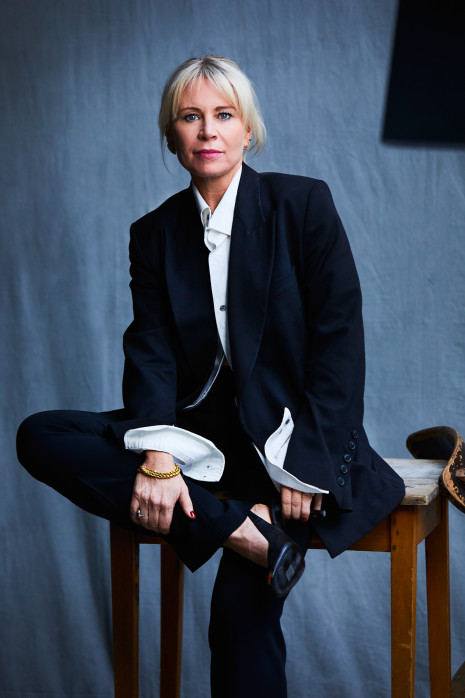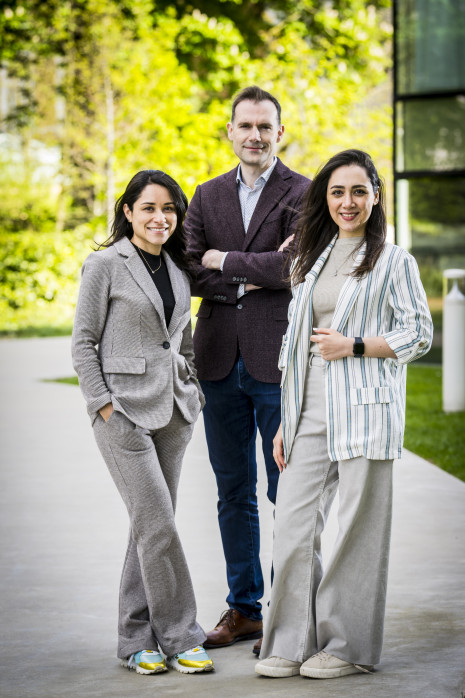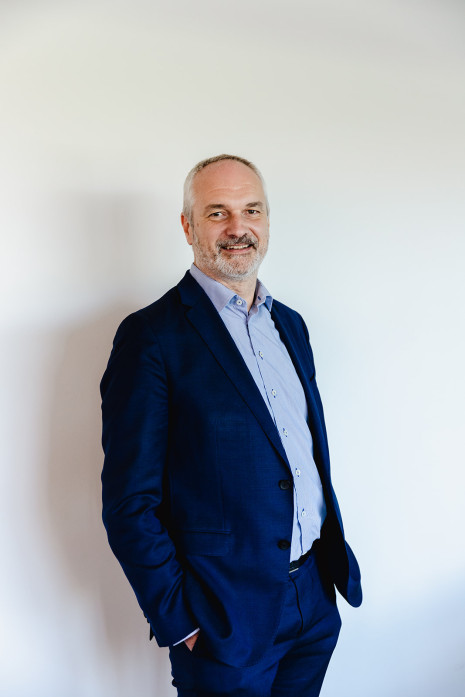Technology meets fashion
Polygonal innovates the fashion world with tech
We would like to become the first in the world port to reconcile the needs of economics, climate, people and the environment.
© Bloovi

What happens when a scientist and a fashion entrepreneur put their heads together...? When Wim Vanroose noticed how his wife Samira Lafkioui spent a lot of time adjusting the patterns of clothing designs, they combine their respective backgrounds in science and fashion in a start-up, called Polygonal.
The couple has developed an online programme that makes it much easier for fashion designers to design, adapt and share a pattern. The city found this development so original that it selected Polygonal as one of three winners of its open call for innovation in the fashion industry. Vanroose and Lafkioui now have the financial resources to further develop their project, in addition to being able to tap into a gigantic network in our Belgian fashion city.
Innovative project submitted to the city
Every year, the City of Antwerp launches several calls to Antwerp entrepreneurs to submit an innovative project within a specific theme and receive financial support. Last summer, the city targeted entrepreneurs who want to innovate the fashion industry. The city wants to strengthen Antwerp’s fashion industry, as part of its new strategic fashion plan 'Antwerp, city of fashion’.
At the end of October, the city announced the three start-ups that will each receive a grant of approximately 50,000 euros. One of these start-ups was Polygonal. “Thanks to this financial support, we can now thoroughly test our digital platform, starting in-house, after which pilot users and finally the general public can test it”, Wim Vanroose and Samira Lafkioui say.
The patents are already ready
Digital proved a winning move. Interestingly enough, Vanroose and Lafkioui came up with something that does not yet exist. “We were just as surprised when we found out that nobody was working on this yet, in spite of the considerable progress in all kinds of technologies”, says Vanroose. Polygonal is therefore unique in the world. The founders recently received approval for a patent from the European Patent Office. Vanroose and Lafkioui also expect to receive good news from China soon about their patent application, because the patent office has already announced that they developed something completely new.
While the fashion industry is often progressive and innovative, it can be quite traditional when it comes to the design aspect.
Something new in an industry that is often considered progressive and innovative? “That's right”, says Samira Lafkioui. “The fashion industry is all those things, but when it comes to design itself, it can be quite traditional. Drawing a clothing collection is still very much a manual job, with everyone starting from scratch and working on paper. While there are interesting CAD programmes on the market that make this process significantly easier, they are extremely expensive. Many designers simply can’t afford them.”
Vanroose thinks the technology behind this software also has its downsides: “These are usually closed systems, meaning that you can’t share patterns with other people. Moreover, they are often complicated and require specific technical knowledge before you can even get started.”
Mathematics in fashion
Make working with patterns easier thanks to an affordable and accessible program? When Wim Vanroose and Samira Lafkioui saw a gap in the market in 2016, they started thinking about ways to achieve this. “When I observed Samira as she adjusted her patterns, I realised that the process is essentially similar to math. The emphasis is on shape optimisation, a well-known mathematical concept”, says Vanroose.
He explains what he means with an example: “When designers create aircraft seats, they try to make them as light as possible while ensuring that they don’t collapse when a passenger sits on them. The shape is thus optimised, using as little material as possible, while making sure that the design is sufficiently sturdy. The technology for calculating this, based on algorithms, is already available.”
It was this technology that inspired Vanroose to create something new. “I checked whether we could use something similar to make pattern adjustment easier. Ultimately, we came up with the technology that we launched: a programme in your browser, which allows you to select patterns from a library and adjust them to your measurements and, optionally, your design. If you want to change the size of a jacket, the software will adjust every part of the jacket design to fit the person with that body shape. The user does not have to do anything, everything is done automatically.”
What about copyright?
Polygonal patterns are open source, which means that everyone can use each other's patterns. “There will be a paid option that allows you to not share your patterns but the general idea is to develop a pattern library”, Samira Lafkioui says.
But will people want to share their patterns? Aren’t patterns something deeply personal? Under copyright, in some cases? “No, not at all. The pattern determines the shape of your garment”, says Wim Vanroose. “A garment usually consists of different panels, such as two sleeves, a front and back. What makes it so unique, and what is usually copyrighted, is how a designer chooses to adjust this pattern, changing the colour, the fabric, adding designs on the fabric or fringes to the sleeves, for example.”
IMPORTANT TEST PHASES
The programme is currently under development. But with the support of the City of Antwerp, Vanroose and Lafkioui can now step up their efforts. “We can now start to test our project. We have the underlying technology in place, now it's time to see if it really works, whether it really does what it’s supposed to do”, the entrepreneurs explain. “That is why our next step is to focus on fifteen different types of garments, each of which has a different degree of difficulty in terms of design. We want to see whether our software can correctly adjust each garment and whether the garment will effectively fit on the test subject based on the design produced with our software.”
But with the support of the City of Antwerp, we can now step up our efforts and test the software.
That is the first important hurdle. Then the first users will test it. “In a second phase, we will ask a select group of test subjects to use our software”, says Vanroose. “Anyone who works with patterns and is interested in testing us is welcome to get in touch”, Lafkioui smiles. “Because we love to work with other industry professionals. This also ties in with our vision to create a community with Polygonal, a group of creatives who like to share their work with others”.
Beyond fashion
If all goes well, Wim Vanroose and Samira Lafkioui can finally make their software available online to everyone. But that’s not all, because the two entrepreneurs have great ambitions for their invention. “We will of course continue to refine the technical side, working with students in fashion technology, fashion, mathematics and computer science from the University of Antwerp, among others”, says Vanroose. “But thanks to our collaboration with the city, we can now also tap into a wider network in the fashion city, so we are looking forward to possible collaborations with industry professionals as well”.
Lafkioui is definitely interested in collaborating with the MoMu, Antwerp’s Fashion Museum. Or maybe even the film industry. “Costume designers will be able to design costumes very easily and quickly with our software or use it to create period clothing for a film. That would be fun", she says. “Or why not use Polygonal to design astronauts' personalised suits? Or clothing for people with a physical disability? So we think there is plenty of potential for our invention outside the fashion industry, and preferably also outside of Belgium”, the entrepreneurs say.
Participating in calls for innovative projects by the city
Are you an Antwerp entrepreneur? Every year, the City of Antwerp launches several calls for projects, offering financial support for innovative projects.
Check this web page (NL) regularly or subscribe to our newsletter (NL).
This article is a collaboration between Bloovi Studio & the City of Antwerp. The article was previously published on Bloovi.be and subsequently edited by the City of Antwerp.


